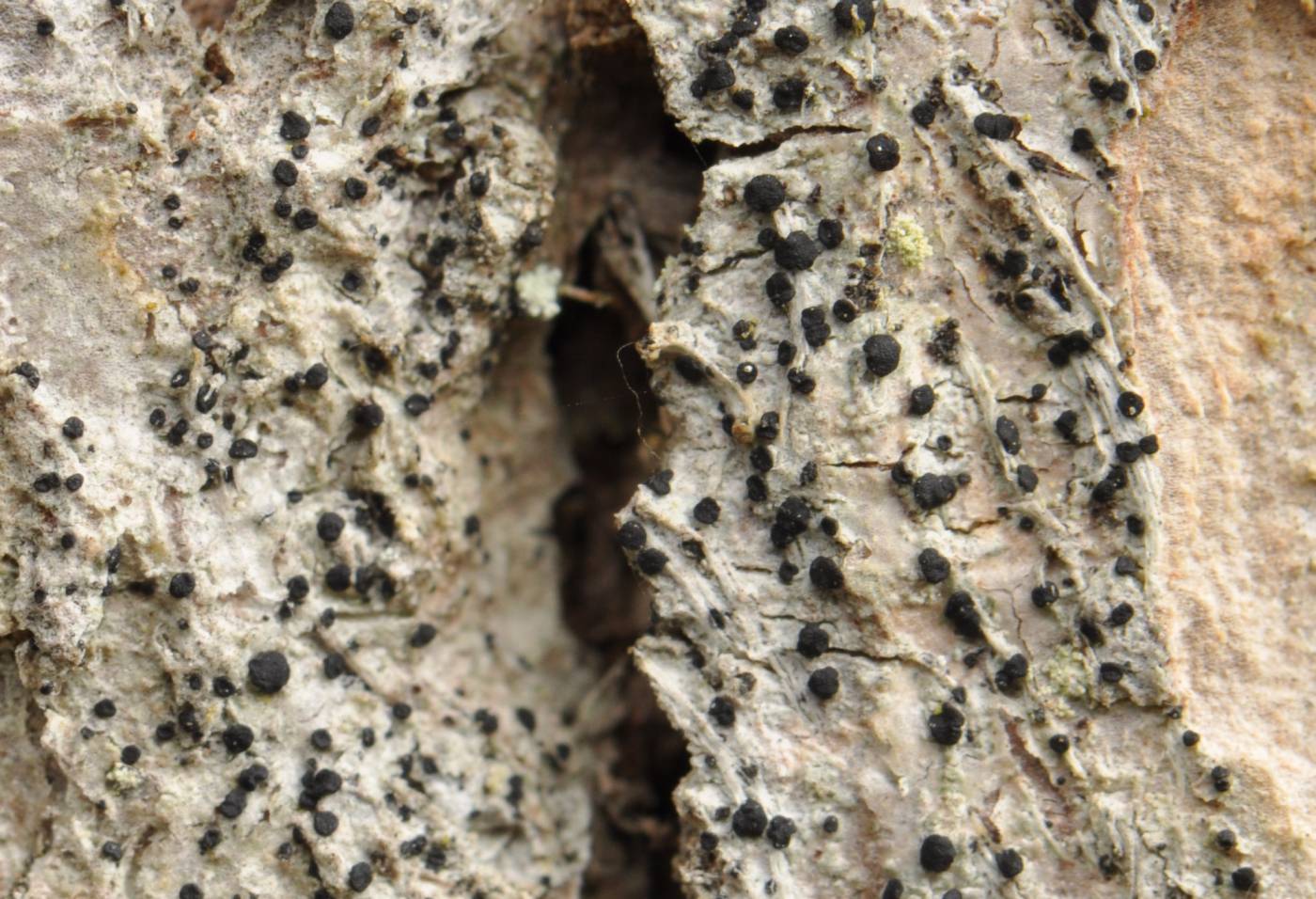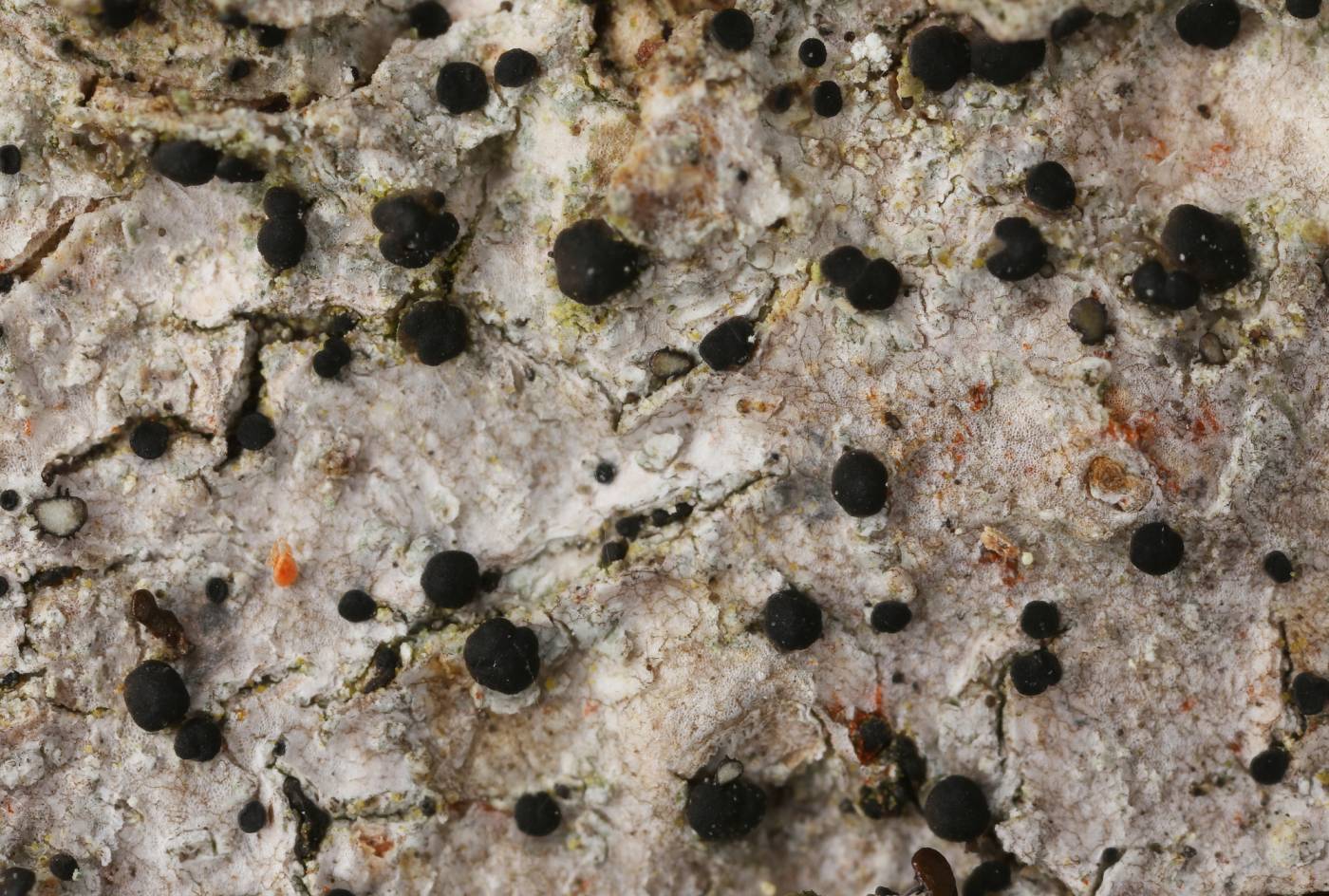It is one of the most abundant and least specialised members of the genus Biatora. It can occur in areas that have been heavily affected by air pollution. However, it does not belong to common species and most of its localities are situated in protected and mountain areas. Although, individual occurrences are also known from lowland forests. It prefers open woodlands, but may also grow on solitary trees. It is an ombrophobous species that grows on a bark or wood of inclined, rain protected parts of trunks, sometimes within a community of so-called calicioid lichens. Its favourite phorophyte is probably sycamore, where it can occur in large quantities. Unlike most of its relatives, it often grows on naturally slightly acidic (subneutral) tree bark, such as Acer platanoides, Fraxinus and Ulmus. It avoids nitrophilous communities of the Xanthorion alliance in the urbanized landscape. It is absent from some larger territorial units, for example, from north-western Bohemia, or from some lowland regions.
taxonomic classification:Ascomycota → Lecanoromycetes → Lecanorales → Ramalinaceae → Biatora
most frequented synonyms:Catillaria globulosaRed List (Liška & Palice 2010):VU – vulnerable
Occurrence in the Czech Republic
All records: 219, confirmed 191. One click on a selected square displays particular record(s), including their source(s).


